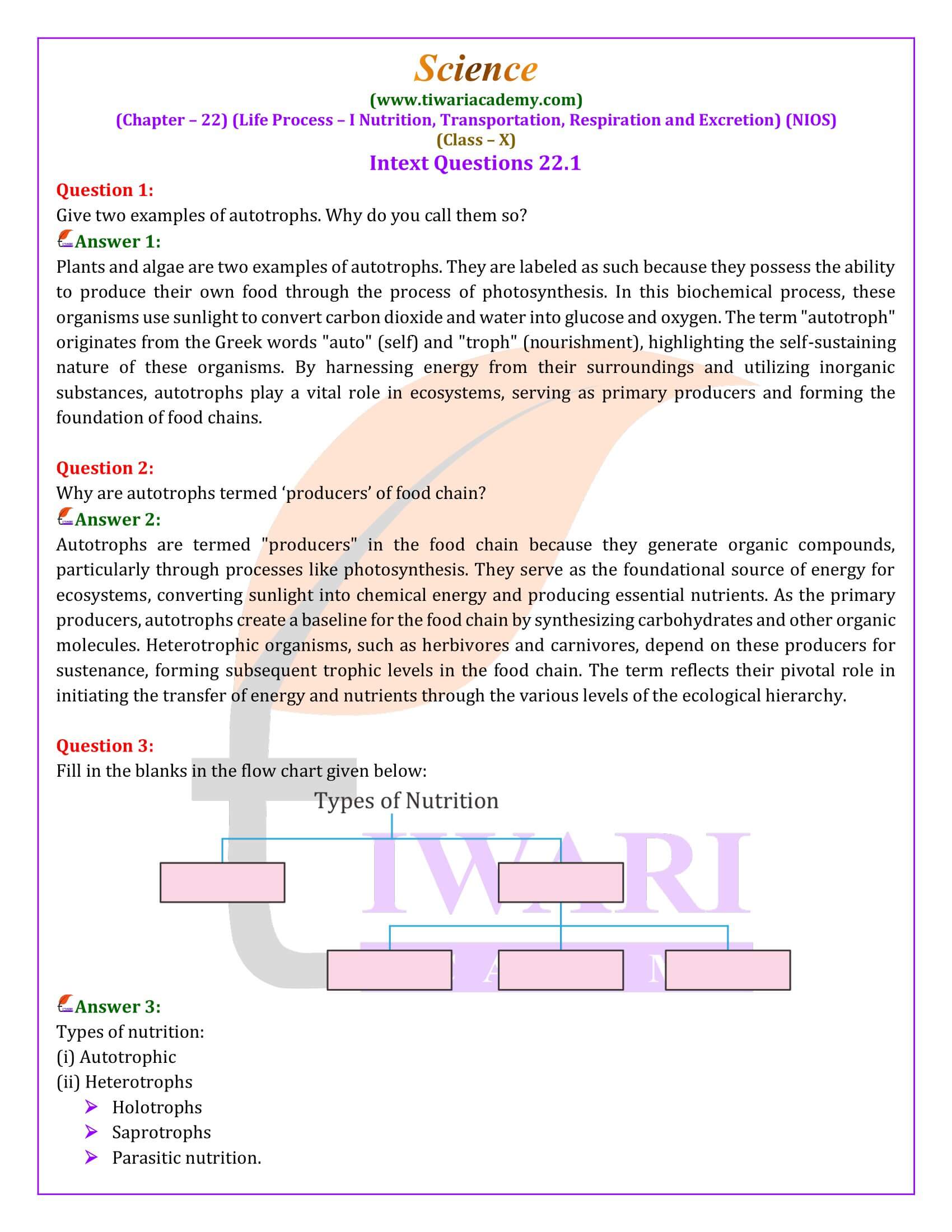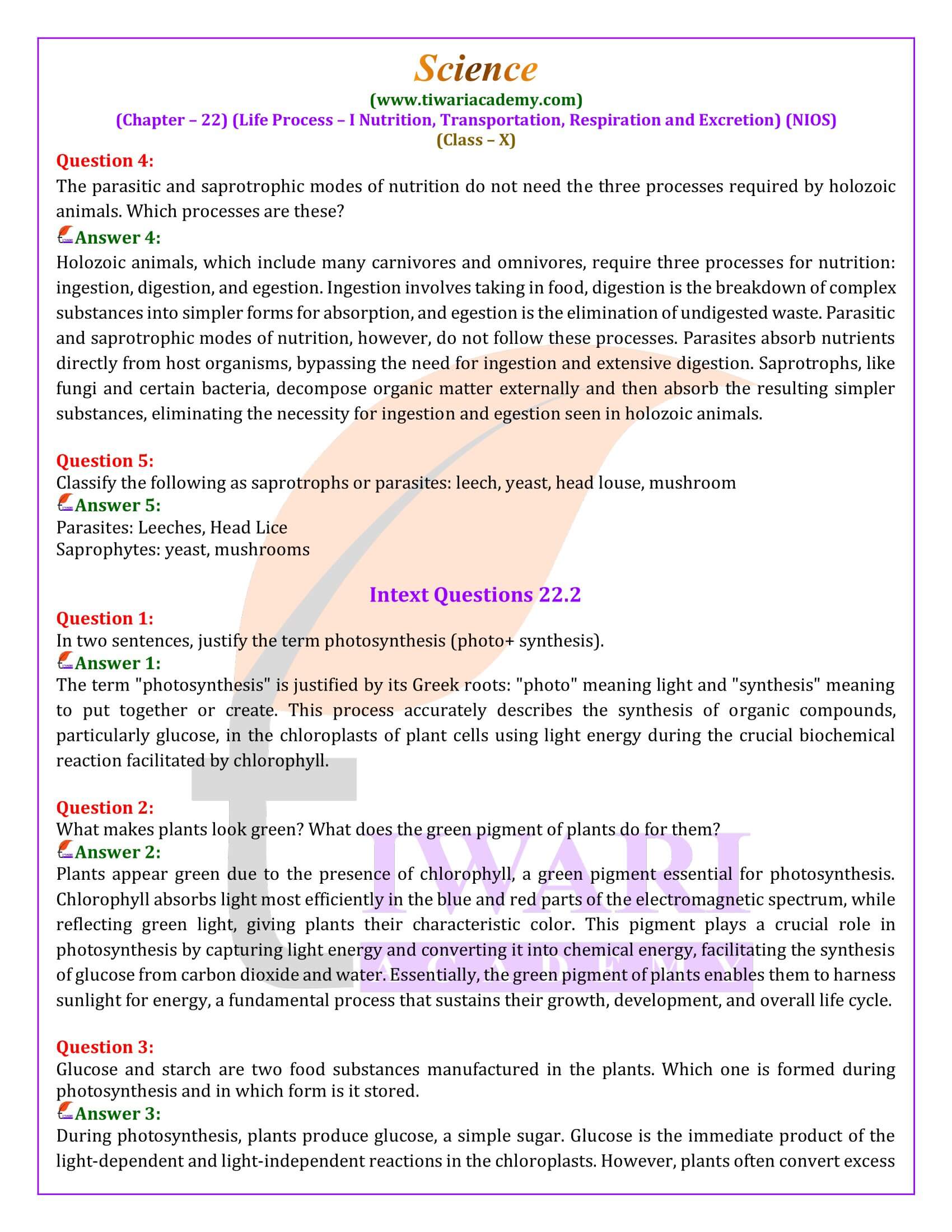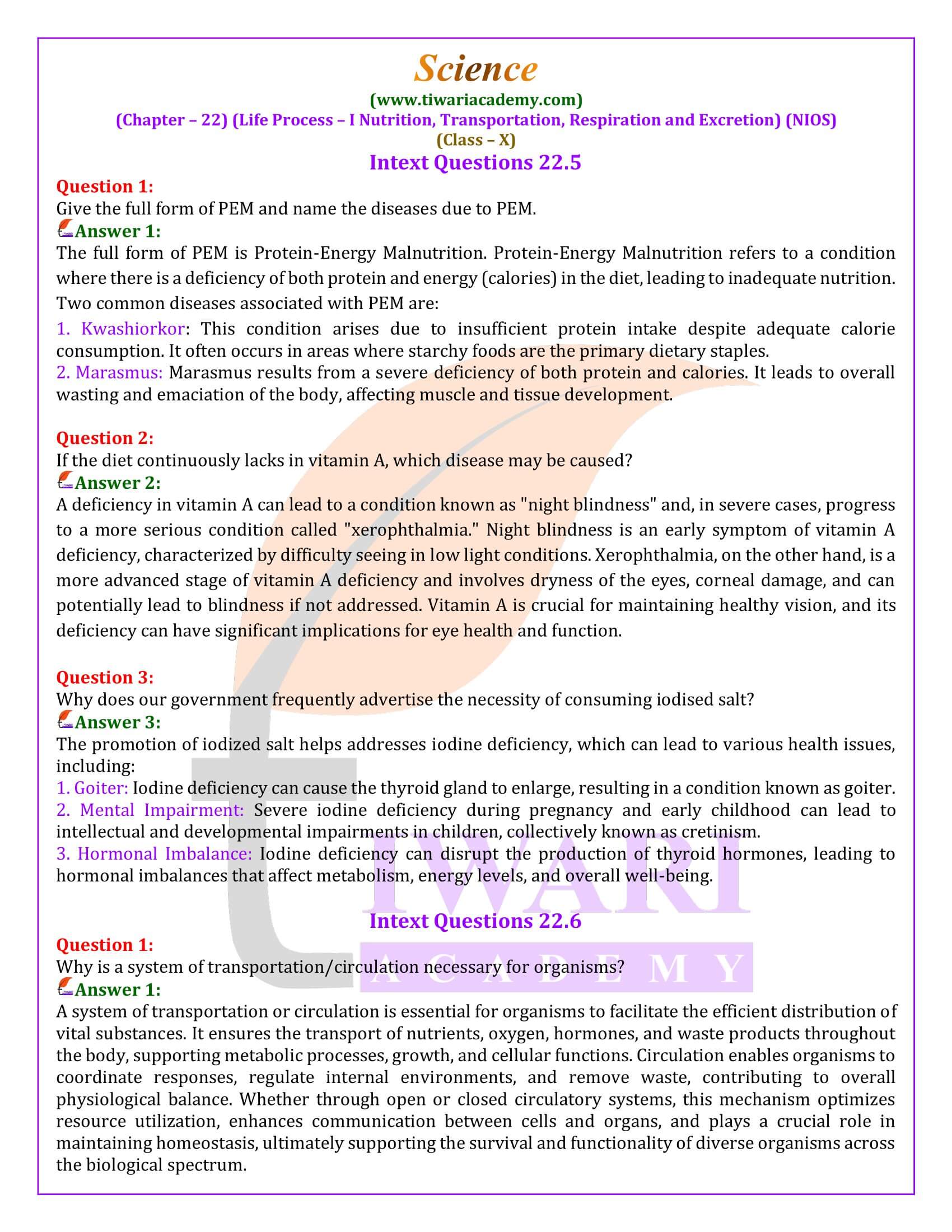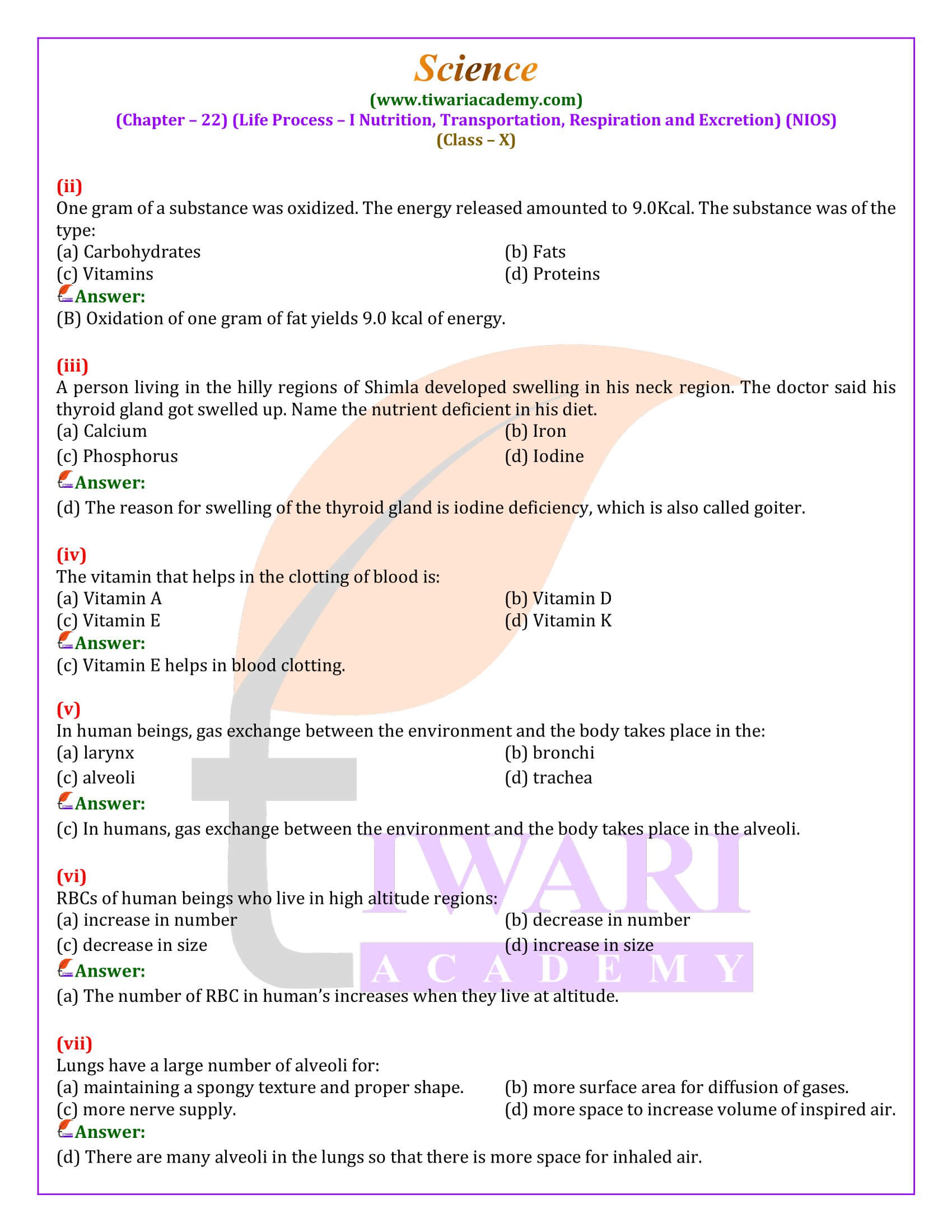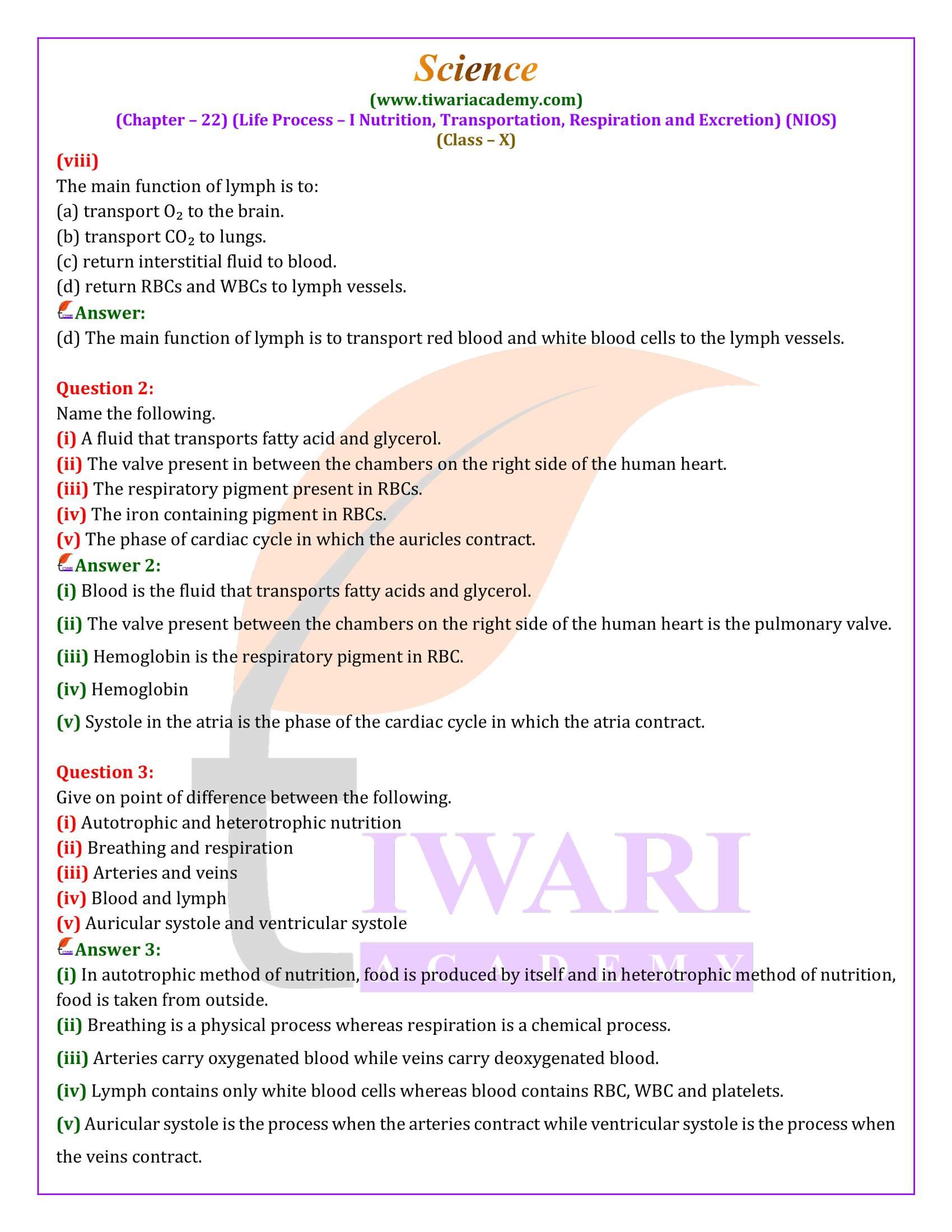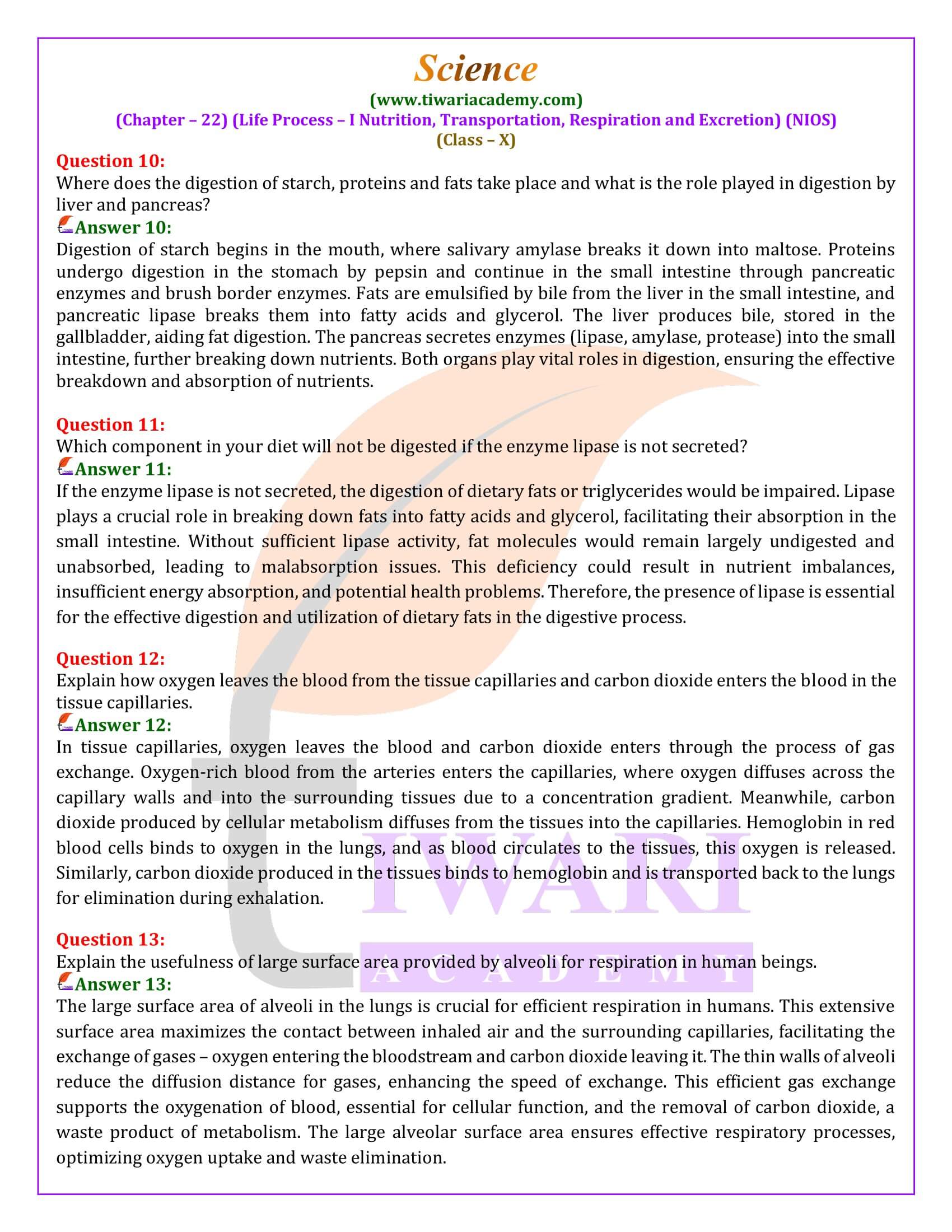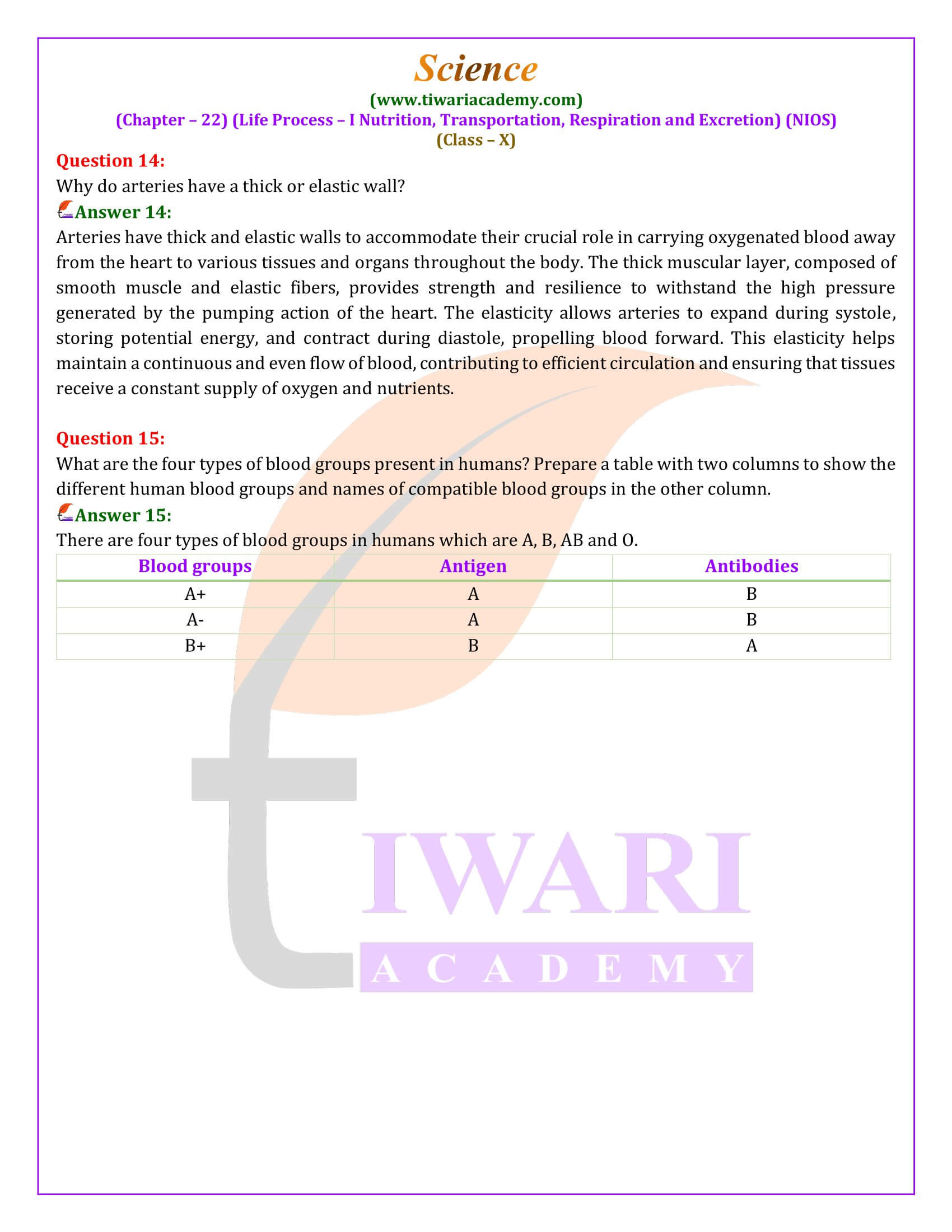NIOS Class 10 Science Chapter 22 Life Process I: Nutrition, Transportation, Respiration and Excretion in Hindi and English Medium revised and modified for new academic session. Get the latest solutions of NIOS Class 10 Science Chapter 22 Question Answers in simple format to revised the complete chapter.
NIOS Class 10 Science Chapter 22 Life Process I: Nutrition, Transportation, Respiration and Excretion
Life Process I: Nutrition, Transportation, Respiration and Excretion
The NIOS Class 10 Science Chapter 22 explains the fundamental life processes—nutrition, transportation, respiration, and excretion—integral to all living organisms. It is designed to enhance understanding of how these processes are crucial for maintaining life, emphasizing the interdependence of these systems within an organism.
Nutrition: The Foundation of Life
Nutrition encompasses the acquisition and conversion of food into energy and essential substances for growth and repair. NIOS Class 10 Science Chapter 22 explains two primary modes of nutrition: autotrophic and heterotrophic. Autotrophs, such as plants and certain bacteria, are capable of synthesizing their food via photosynthesis, using sunlight, carbon dioxide, and water, making them the foundational producers in the ecosystem. Heterotrophs, including animals and fungi, rely on consuming organic matter from other organisms.
Further detailing human nutrition, the text elaborates on the importance of a balanced diet, which must include carbohydrates, proteins, fats, vitamins, and minerals in appropriate proportions to meet an individual’s energy requirements and physiological functions. Various disorders stemming from nutritional deficiencies are also discussed, highlighting the significance of a well-rounded diet for maintaining health.
Transportation: Circulatory Mechanisms
The transportation section outlines the systems that distribute essential substances like nutrients and oxygen to cells and remove waste products. In humans, this is achieved through a complex circulatory system comprising the heart, blood, and blood vessels. Plants use xylem and phloem for the transportation of water, minerals, and food, demonstrating a fascinating contrast in how different life forms adapt to meet this vital need.
Respiration: Energy Production
Respiration is described as a critical process for energy production, primarily through the breakdown of glucose to release energy, carbon dioxide, and water. This section effectively differentiates between breathing—a mechanical process of gas exchange—and cellular respiration—a biochemical process occurring at the cellular level. The explanation extends to the structure and function of the human respiratory system, including lungs, alveoli, and the mechanics of breathing, which facilitate the exchange of oxygen and carbon dioxide between the body and the environment.
Excretion: Waste Management
NIOS Class 10 Science Chapter 22 concludes with excretion, the process by which living beings eliminate waste products generated by metabolism. In humans, the primary excretory system involves the kidneys, ureters, bladder, and urethra, which work together to filter blood, reabsorb necessary nutrients, and expel urine. The text also touches upon other organs involved in excretion, like the skin and lungs, illustrating a comprehensive view of how organisms maintain internal homeostasis by removing toxins and maintaining fluid and electrolyte balance.
The chapter 22 offers a thorough overview of the essential life processes, illustrating the complexity and interdependence of systems within living organisms. It combines detailed scientific explanations with practical insights into health and dietary needs, providing a foundational understanding for students on how these processes are interlinked and vital for life.
